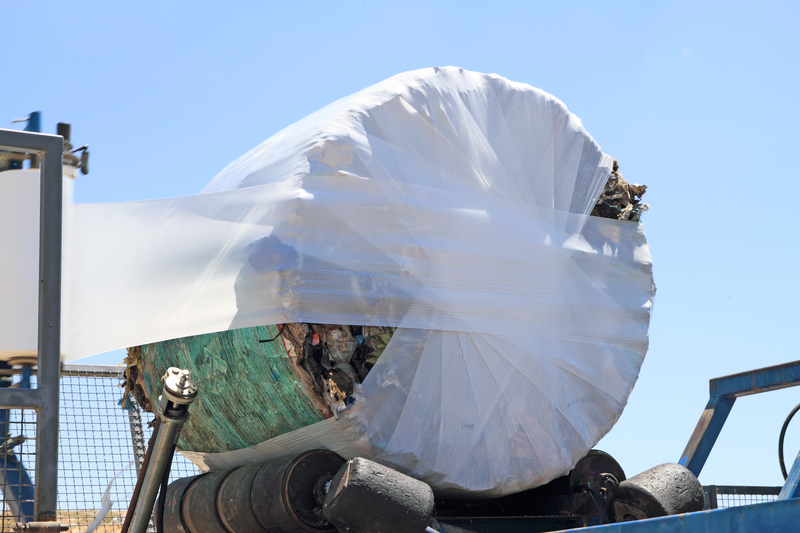Safeguarding the Environment: How to Properly Discard Your PPE Waste
Personal Protective Equipment (PPE) has been crucial in protecting health during global health crises and in various industries. However, the massive increase in single-use PPE, such as masks, gloves, face shields, and gowns, has presented a new environmental challenge. Understanding how to properly discard your PPE waste is essential not only for public health but also for the planet's protection. This comprehensive guide will walk you through the best practices and guidelines to ensure your PPE waste is disposed of responsibly.
Why PPE Waste Management Matters
The surge in PPE use has led to a spike in plastic pollution. PPE items are designed for single use and are predominantly made from non-biodegradable materials like polypropylene, latex, and polyvinyl chloride. Improper disposal can result in these items ending up in landfills, waterways, and natural habitats, posing severe threats to wildlife, ecosystems, and even human health.
- Environmental Impact: PPE waste contributes to the growing plastic crisis. When not disposed of correctly, it takes hundreds of years to break down and often releases toxic substances.
- Public Health Risk: Used PPE can carry pathogens, posing risk of contamination and disease transmission for sanitation workers and the wider community.
- Legal and Regulatory Issues: Many regions now have strict guidelines for the disposal of PPE, and failing to comply can result in penalties.

Types of PPE and Their Environmental Hazards
Before discussing eco-friendly PPE disposal, it's important to recognize the types of PPE commonly in use and their specific risks:
- Masks: Usually made from multilayered plastics, they resist degradation and break down into dangerous microplastics.
- Gloves: Latex and nitrile gloves are durable yet persistent environmental pollutants if not properly disposed of.
- Face Shields & Gowns: Large items mainly made of plastic that seldom degrade, adding bulk to plastic waste streams.
Proper Disposal Methods: How to Discard Your PPE Responsibly
Disposing of your PPE waste properly is key to reducing its environmental burden. Here are essential steps to follow:
1. Never Litter PPE Waste
- Do not discard PPE such as masks and gloves on streets, parks, or outside buildings. Littered PPE pollutes the environment, harms wildlife, and can aid in the spread of pathogens.
2. Separate PPE Waste from Recyclables
PPE like masks and gloves are not recyclable through standard curbside programs. Mixing them with recyclables can contaminate the entire batch.
- Place used PPE in a dedicated trash bag or bin distinct from regular recyclables.
3. Securely Bag and Seal
- Double-bag used PPE waste to prevent leaks, tears, and potential contamination during handling.
- Tie off the bags tightly before placing them in your general waste bin.
4. Wash Your Hands After Handling PPE Waste
- Always wash your hands thoroughly with soap and water for at least 20 seconds after disposing of PPE.
- If soap and water are not available, use a hand sanitizer containing at least 60% alcohol.
5. Follow Local Regulations
- Check your municipality's guidelines on discarding PPE waste. Some may require PPE to be marked or separated, while others might have dedicated drop-off points or services.
6. Do Not Flush PPE
- Never flush masks, gloves, or wipes down the toilet. These items clog pipes, cause sewage overflows, and can end up polluting water bodies.
Disposal of PPE Waste in Different Settings
Household PPE Waste
If you're using masks and gloves for errands or protection at home:
- Place used PPE in your general waste bin, not in recycling bins.
- Double bagging is recommended, especially if the waste comes from someone who is ill.
- Spray or tie the waste bag securely and place it outside for regular garbage collection.
Healthcare Facilities
Hospitals, clinics, and dental offices generate large quantities of PPE waste, often contaminated with biological material:
- Follow institutional protocols and government regulations for biomedical waste segregation.
- Use color-coded bins (often yellow or red) designated for infectious PPE waste.
- Professional medical waste services should collect and incinerate or sterilize this waste.
Public Spaces and Workplaces
Offices, retailers, and schools must provide specific bins for PPE disposal:
- Encourage staff and visitors to use marked PPE bins.
- Regularly sanitize bin touchpoints and empty the bins to avoid overflow.
- Ensure cleaners are supplied with gloves and masks when handling PPE bins.
Innovative and Sustainable PPE Waste Solutions
Recycling Initiatives for PPE Waste
Traditional recycling programs typically reject PPE receipts due to the risk of contamination and the complex materials involved. However, some innovative firms and organizations are developing specialty PPE recycling programs.
- Some companies collect used masks and gloves, sanitize them, and convert them into plastic pellets for creating park benches or construction materials.
- Participation in these programs helps prevent landfill contributions -- check for similar initiatives in your area.
Biodegradable and Reusable PPE Options
- Switch to reusable PPE: Use washable cloth masks and gowns where appropriate, reducing single-use plastic dependency.
- Biodegradable masks and gloves made from cellulose or plant-based materials are increasingly available. These offer protection while breaking down rapidly in the environment.
What Can Individuals Do? Action Steps for Proper PPE Disposal
Each of us has a critical role to play in safeguarding the environment from PPE pollution. Whether at home, work, or in public:
- Educate others: Share information about correct PPE disposal practices with friends, family, and colleagues.
- Support eco-friendly PPE: When buying masks or gloves, choose brands with sustainable or biodegradable products if available.
- Reduce reliance on disposable PPE: Use reusables wherever it is safe and practical to do so.
- Safely store used PPE: Keep a designated place at home or in your bag for used items until you can dispose of them properly.
- Participate in community cleanups: Help pick up littered PPE waste in your neighborhood to prevent environmental harm.
Corporate and Community Responsibilities for PPE Waste
Organizations, businesses, and governments have a heightened responsibility to prevent PPE pollution. Here's how leadership can make a difference:
- Install designated PPE disposal stations in public areas, transportation hubs, and large venues.
- Provide ongoing PPE waste management training for staff in high-use sectors such as healthcare, retail, and schools.
- Implement clear signage to direct people to PPE bins and explain proper disposal steps.
- Work with local waste authorities to align workplace or public venue policies with current guidelines.
- Support innovation by partnering with recycling-for-PPE startups and encouraging the development of safe, sustainable alternatives.
Common PPE Disposal Mistakes to Avoid
- Littering disposable masks and gloves in public spaces. This increases pollution and health hazards.
- Putting PPE in recycling bins. This contaminates recycling streams and endangers workers.
- Flushing PPE down toilets or drains. This blocks plumbing and pollutes waterways.
- Ignoring local disposal guidelines. Always stay updated with authority recommendations as regulations evolve.

Frequently Asked Questions About PPE Waste Disposal
Can PPE Waste Be Recycled?
Standard municipal recycling programs do not accept used masks, gloves, or gowns. However, some specialty programs may collect clean, non-infectious PPE for recycling.
How Should Used Masks Be Disposed Of?
Place used masks in the general waste bin, ideally double-bagged and tied securely. Do not flush or recycle.
What Should I Do If I Find Littered PPE?
Wear gloves and use a litter picker if possible, place the PPE in a bag, and dispose of it in a general waste bin. Wash your hands thoroughly afterward.
Are Cloth Masks Better for the Environment?
Yes. Reusable cloth masks, when used and washed correctly, greatly reduce environmental impact compared to single-use disposable masks.
Conclusion: Our Shared Duty for PPE and Environmental Safety
Learning how to properly discard PPE waste is a simple yet powerful way to help the planet. As PPE remains a part of our daily lives, responsible disposal ensures we protect not only ourselves but also future generations and Earth's ecosystems. Whether at work, home, or in the public realm, every responsible action counts.
Let's pledge to safeguard the environment -- start today by properly disposing of your PPE waste, supporting sustainable alternatives, and raising awareness in your community.
```